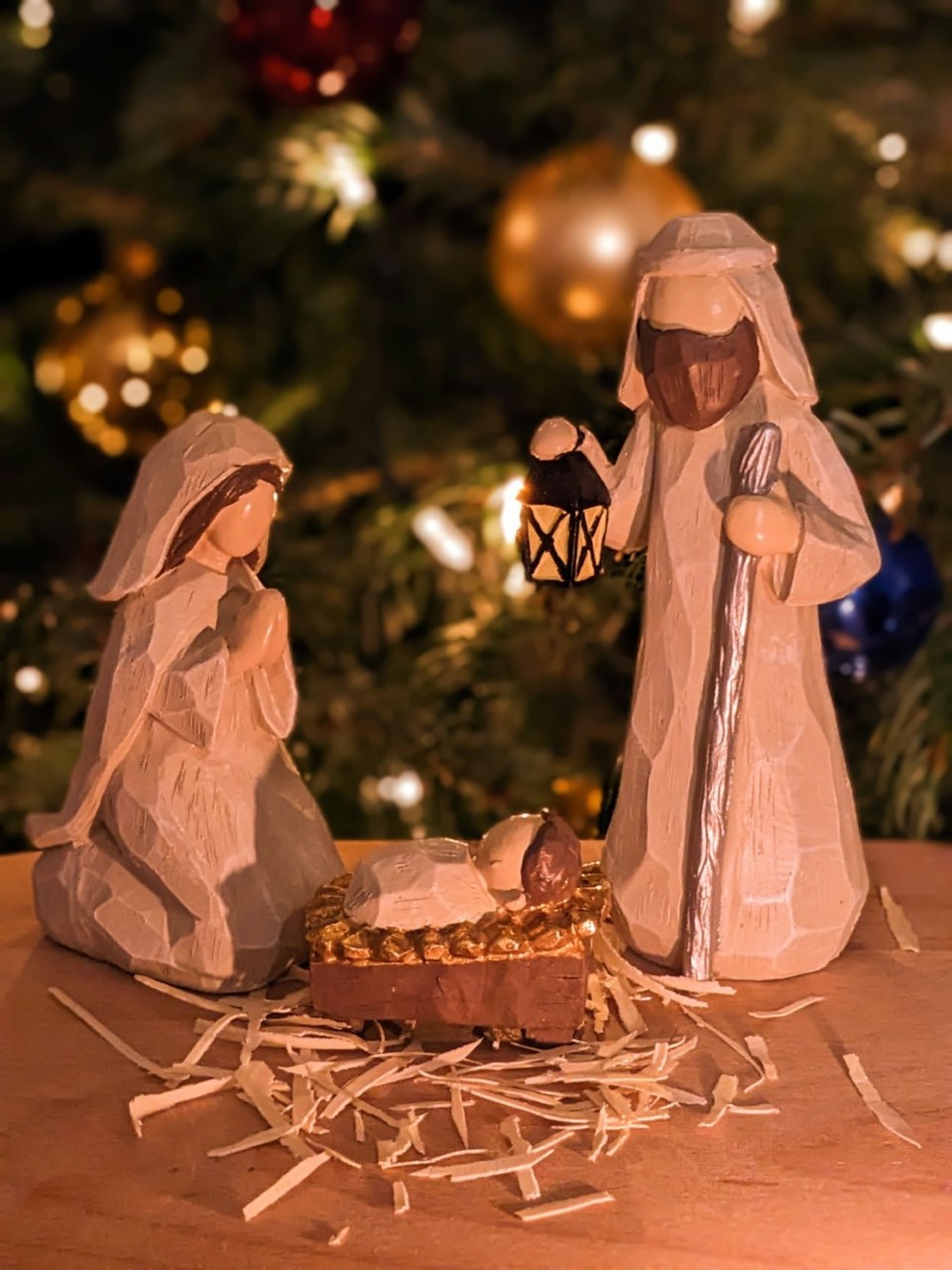The crimson glass globe slipped through my hands and fell to the floor. It was family tradition at Christmas that a child would carefully place it near the nativity scene. It had become fragile as only old story-filled glass does after the loving touch of 5 generations of little hands. As I bent down to pick up the pieces, I wondered if it was beyond repair.
Then I remembered a conversation from the radio program Tapestry when host Mary Hynes interviewed Mako Fujimura about his art and book entitled “Art and Faith: A Theology of Making”. It was a wide-ranging conversation. Fujimura spoke of the ancient Japanese practice of Kintsugi, the art of “golden repair”. It was used to re-make the prized porcelain dishes used in the tea ceremony. The dishes might no longer be used for their first purpose yet something unique and beautiful would be created using ground precious metals such as gold. History made beautiful rather than being discarded or disguised.
The idea of creating something beautiful with care and dedication appealed to my belief that nothing in creation is ever truly lost nor unloved. Fujimura, a well known artist, has exhibited his work around the world. He described the act of making art as sacred. It was through creating art he discovered the Divine. The God he found is not one of scarcity but of abundance, of love. For him, the journey of imagining and possibilities of beauty often begins with loss. He found that in the work of creating, abundance inevitably reveals itself.
It is almost Christmas Eve. How do Christmas and Kintsugi relate? Perhaps the question might be what is broken in the story of the Christ child that needs remaking? If you listen carefully to the story, you will be reminded that the birth of Jesus does not take place in a warm comfortable room with Mary surrounded by attentive midwives. No, instead it takes place in a humble messy stable. Yet this birth marks a moment when all creation stopped, held its breath, and then danced in joyful celebration. From the struggles of a captured people forced into poverty and virtual slavery, hope is born, and love becomes a reality.
These days the story is re-told in familiar carols, from pulpits and in chaotic children’s pageants. Angel’s wings are dusted off, shepherds run into stables and the expectation of joy is both hesitantly and boldly laid before us.
How do we choose to hear it? We know all too well that hope has grown scarce as wars, poverty, violence, pandemic and climate disasters affect our daily lives. Have we allowed ourselves to be seduced by worry that joy feels unattainable? Or are we able to risk and let the story re-make us?
The birth of the Christ Child calls us into abundance. It also calls us into sacred imagining to make beautiful the broken pieces around us. This love is at the heart of creation, for in hopelessness, hopefulness can be re-discovered. Much of what appears to be broken is waiting for the Creator to pass by with brush and golden glue to create something different, something truly beautiful from a brokenness we thought was impossible to change or repair. This is the gift of Christmas.
The glass globe now sits in a different place of honour. It has had a “golden repair” and is now a Magi borne gift for the baby in the manger.
Rev. Canon Nancy Ford, retired Deacon, is an Honorary Assistant at Christ Church Cathedral in Victoria and continues to be involved in community programs
You can read more articles on our interfaith blog, Spiritually Speaking, at https://www.timescolonist.com/blogs/spiritually-speaking
This article was published in the print edition of the Times Colonist on Saturday, December 23rd 2023



